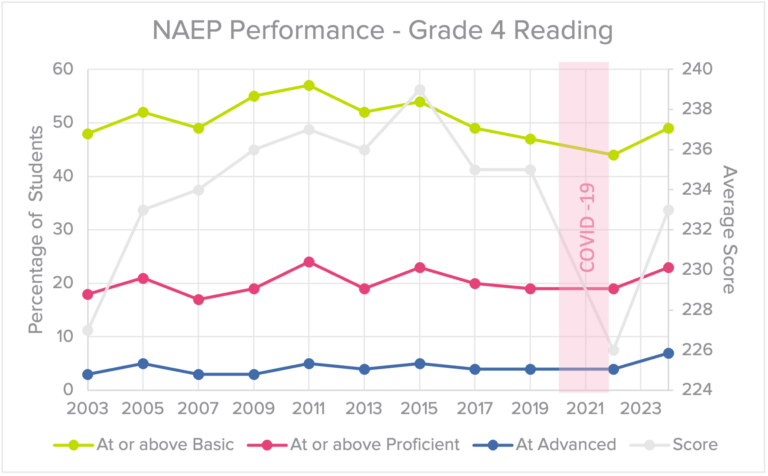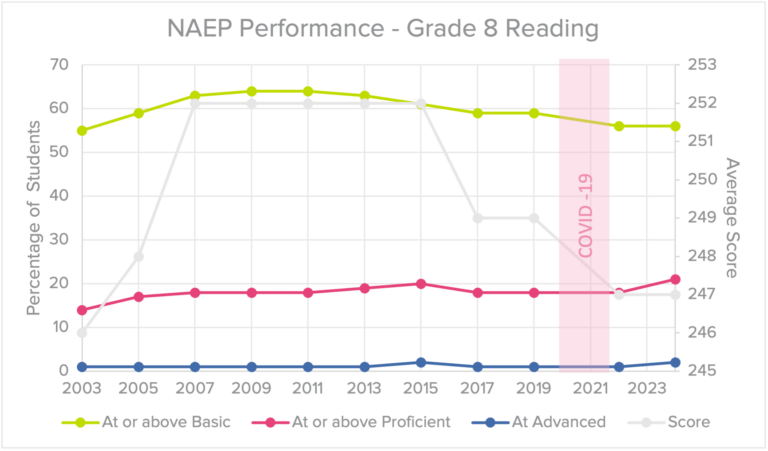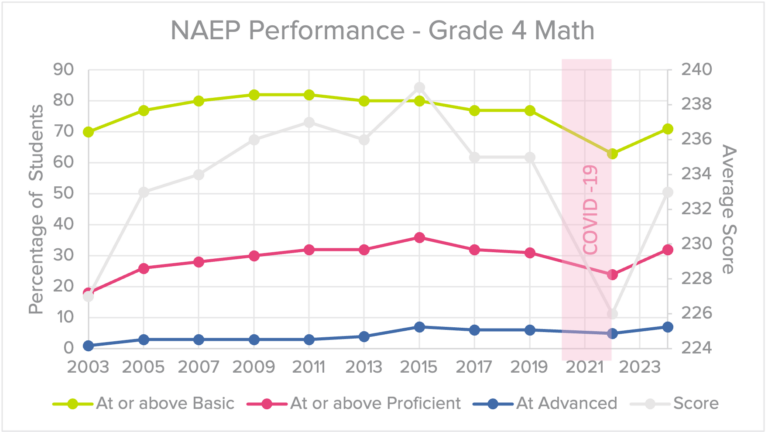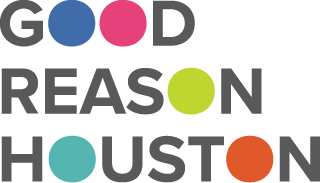This spring, fourth and eighth graders across Houston ISD participated in the 2024 National Assessment of Educational Progress (NAEP), a nationally normed exam taken every two years by students in select districts, including HISD. This assessment provides a valuable benchmark, helping our community understand how Houston’s public schools compare to others across the country in preparing students for success beyond graduation.
The results, released Wednesday, highlight encouraging improvements across multiple grade levels and subjects. Notably, the percentage of students at or above proficient increased in all subjects in all grades.
For fourth graders, the gains outpaced those of all large urban districts combined, as well as state and national averages.
“Sometimes when we tell people Good Reason Houston wants Houston to be the leading education city in the nation, they make it seem like that’s unattainable,” said Good Reason Houston CEO Cary Wright. “But when we see a national report card that shows Houston students improved more than all other large urban districts combined – we know it’s not out of reach.”
While progress is being made, equity gaps persist. Houston ranks among the top districts nationally in terms of achievement gaps based on socio-economic status.
“With only 17% of the most recent cohort of HISD high school graduates earning a living wage six years after graduation, we must improve this outcome. That starts with ensuring every student at every school has access to quality instruction every day,” Wright said.
Below are some key findings from Houston’s performance on the NAEP exam:
Elementary Students Leading the Way
At the elementary level, fourth-grade students made significant progress, particularly in math. The proficiency rate for fourth-graders taking the NAEP Math assessment improved by an impressive 8 percentage points since 2022, while reading proficiency increased by 4 percentage points. These strides are largely attributed to the district’s adoption of research-backed curricula over the past several years in early math and reading, which have helped build a strong foundation for learning.
Reading Performance on the Rise

Reading scores show a positive trend across grades. For fourth-graders, the proficiency rate is approaching HISD’s historic high of 24% from 2011. In middle school, the 21% proficiency rate represents the highest reading performance in the past two decades. These results align with the district’s 2024 STAAR outcomes, where fourth-grade students saw a 7-point increase in reading proficiency and eighth-grade students experienced a 2-point rise. Despite gains, reading proficiency rates remain very low with only one in five students achieving a proficient score on the reading exam.

Middle School Gains More Modest
Eighth-grade performance showed smaller but important improvements. Math proficiency increased by two percentage points, while reading proficiency improved by three percentage points since 2022. The more moderate gains in middle school are likely due to the lingering effects of pandemic-related learning disruptions in students’ early years. While these gains are not as dramatic as those in elementary school, they are an encouraging step toward restoring pre-pandemic achievement levels.
Math Performance Remains an Urgent Concern

Despite these relative gains, math proficiency remains a pressing challenge. Currently, only 1 in 3 fourth graders meet national proficiency standards in math—a figure that drops to 1 in 5 by eighth grade. These statistics emphasize the need for continued focus on math instruction to ensure students are prepared for future academic and career opportunities.
Persistent Equity Gaps Need Addressing
The difference in NAEP scores between Black and white and Hispanic and white students are stark, pointing to opportunities for Houston ISD to better serve these marginalized student groups. Hispanic students, who comprise nearly 62% of the district’s student body, underperformed white students across subjects and grade levels placing Houston among the cities with the greatest gaps in NAEP scores between these groups. Additionally Houston had the fourth largest achievement gap between black and white students in fourth grade math among 19 cities reporting data on these groups.
The difference in performance between economically disadvantaged and non-economically disadvantaged students is sizable across grades and subjects, placing Houston among the top 6-7 districts in the country (among 22 cities reporting data) for the size of the achievement gaps by income.

